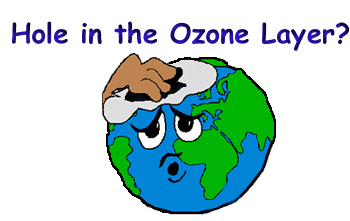“Tsunami” is a Japanese word in which “tsu” means harbor and “nami” means wave. Thus the word means “harbor wave.”
A tsunami is a series of waves of extremely long wavelength that are usually caused by a strong disturbance of the water, such as an underwater earthquake, landslide, or volcanic eruption, explosions, and even the impact of cosmic bodies, such as a meteorite can also cause a tsunami.
The waves travel outward in all directions from the disturbance, similar to what you would see if you threw a rock in a pond.
The average wave speed is 450 miles per hour.
Tsunami waves differ dramatically from traditional waves in that the tsunami waves have great depth, extending from the ocean floor the to water’s surface. The height above the water may be only a few inches, but the huge wave is actually “hidden” in the water below.
Traditional surface waves, such as those you would see at an ocean coastline, are shallow waves; they are caused by the gravitational pull of the moon, sun, and planets, or by wind.
Because of the great depth of the tsunami waves, when they hit the coastline their height may increase from a few inches to tens of feet. And the tremendous speed of the waves (about 500 miles per hour) can carry the tsunamis a great distance onto land, flooding areas, destroying structures, and injuring or killing people.
The sequence below illustrates how an underwater earthquake disturbs the water and causes a tsunami.
Tsunamis can be generated when the sea floor abruptly deforms and vertically displaces the overlying water. Tectonic earthquakes are a particular kind of earthquakes that are associated with the earth's crustal deformation; when these earthquakes occur beneath the sea, the water above the deformed area is displaced from its equilibrium position. Waves are formed as the displaced water mass, which acts under the influence of gravity, attempts to regain its equilibrium. When large areas of the sea floor elevate or subside, a tsunami can be created.
Is it Possible to Prevent a Tsunami?
In a word, no. Once a tsunami has been formed, there is no way to stop it; but with an effective warning system in place, people can be evacuated.
 And reducing the damage caused by a tsunami is certainly achievable. Tsunami walls, flood gates, and channels are three measures that can be taken to that end.
And reducing the damage caused by a tsunami is certainly achievable. Tsunami walls, flood gates, and channels are three measures that can be taken to that end.
Japan is prone to tsunamis and has built numerous tsunami walls along the coast of heavily populated areas. The tsunami walls are designed to absorb some of the energy of the tsunami and redirect some of the water back towards the open ocean. The walls may be as high as 14 feet (see picture below).
Flood gates and channels can help redirect some of the incoming water from a tsunami, but a large tsunami will easily overwhelm any of the measures that are used to reduce its strength.
In pic=A tsuanami wall in JapanWhat happens when a tsunami encounters land?
Just like other water waves, tsunamis begin to lose energy as they rush onshore - part of the wave energy is reflected offshore, while the shoreward-propagating wave energy is dissipated through bottom friction and turbulence. Despite these losses, tsunamis still reach the coast with tremendous amounts of energy. Tsunamis have great erosional potential, stripping beaches of sand that may have taken years to accumulate and undermining trees and other coastal vegetation. Capable of inundating, or flooding, hundreds of meters inland past the typical high-water level, the fast-moving water associated with the inundating tsunami can crush homes and other coastal structures. Tsunamis may reach a maximum vertical height onshore above sea level, often called a run up height, of 10, 20, and even 30 meters.
What should you do?
1. If you are at home and hear there is a tsunami warning, you should make sure your entire family is aware of the tsunami. Your family should evacuate your house if you live in a tsunami evacuation zone.
2. If you are at the beach or near the ocean and you feel the earth shake, move immediately to higher ground. Do not wait for a tsunami warning to be announced.
3. If you are on a ship or boat, do not return to port if you are at sea and a tsunami warning has been issued for your area. Tsunami can cause rapid changes in water level and unpredictable dangerous current in harbours and ports.
The Mega Tsunami
.
.
Tsunami Footage
..
..
Another Tsunami Footage
.
.
..........................................................






















